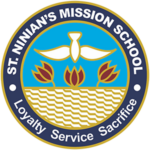School History
History of the school
The church of Scotland Women’s (Zenana) Mission started an orphanage and Boarding school at 125 Bowbazar street in the year 1906, in a rented building . It was felt at the time that the Orphanage and Boarding school should be shifted from the present premises which was on a noisy and crowded thoroughfare , to the suburbs, where a large compound could be secured and the children could enjoy a greater measure of freedom and fresh air . It was also necessary that the site be from which those engaged in teaching in the school for Hindu Girls and with the Zenanas (women ) in the north end of Calcutta could carry on their work without undue inconvenience.
After years of search, the present premises of 30 Barrackpore Trunk Road was acquired at a cost of Rs. 70,000/-, and the purchase was complete by the end of April 1909. Five weeks later the Mission entered into occupation , and the health of the girls has been excellent since they moved into their new quarters .
In 1910, the new building was designed by Messrs. Makintosh Burn & Co, to serve as Christian Orphanage and Boarding School and was in the process of erection.
On 16th January 1912 , Sir J. Molesworth Macpherson inaugurated the new building of Church of Scotland Women’s Mission and the building was dedicated in the name of St. Ninian’s .
The school became high school and came under Govt. Grant – in – aid scheme in 1980.
It is under WBBSE , Bengali medium school. At present the Bengali – medium school runs in the building made by Samagra Siksha Mission.
In the year 2020, the Diocese of Calcutta decided to open a co – educational English medium section in the old Heritage building, keeping the aim to provide the children CBSE examination in class X and XII. The new English medium started with only 32 children in the kindergarten section , in on line mode as it was during the covid-19 pandemic lockdown.


The Porch
The Porch of the Heritage Building (which was built in the year 1910 – 1912) welcomes all those who come , and shelter their arrival and departure.On the front above , at centre is the St. Andrew’s Cross, which is the national Scottish cross , and on either side of it is Celtic cross. The Celtic cross represents the shape of cross used in the early days when Christianity first came to Scotland.
Over the carriage entrance of the Porch there is a dove hovering without stretched wings. The ‘Dove’ is the symbol of joy happiness, place, affection and conservation. The ‘Dove’ over the Porch signifies that it is desired that within the school the spirit of love, joy and peace should reign, and that there may be here the pure and humble heart in which the Divine blessing may descend. Round about the dove there are the link of chains which shows the restrictions and restraints, the limitation of disciplines and trainings. The spirit of peace and blessing cannot only be manifest within the limits of the school, but just as the dove within the chain border and above it, so we pray that the divine blessing may reach out beyond these walls to all who come and go by this Porch.
Then there on either side of the doorway are 3 Lotus buds standing out of the water. Lotus is symbolic of innocence and beauty, and here we have 3 lotus buds in different stages of ripening signifying the little children of this school, all blowing buds growing up to become a beautiful flower.
